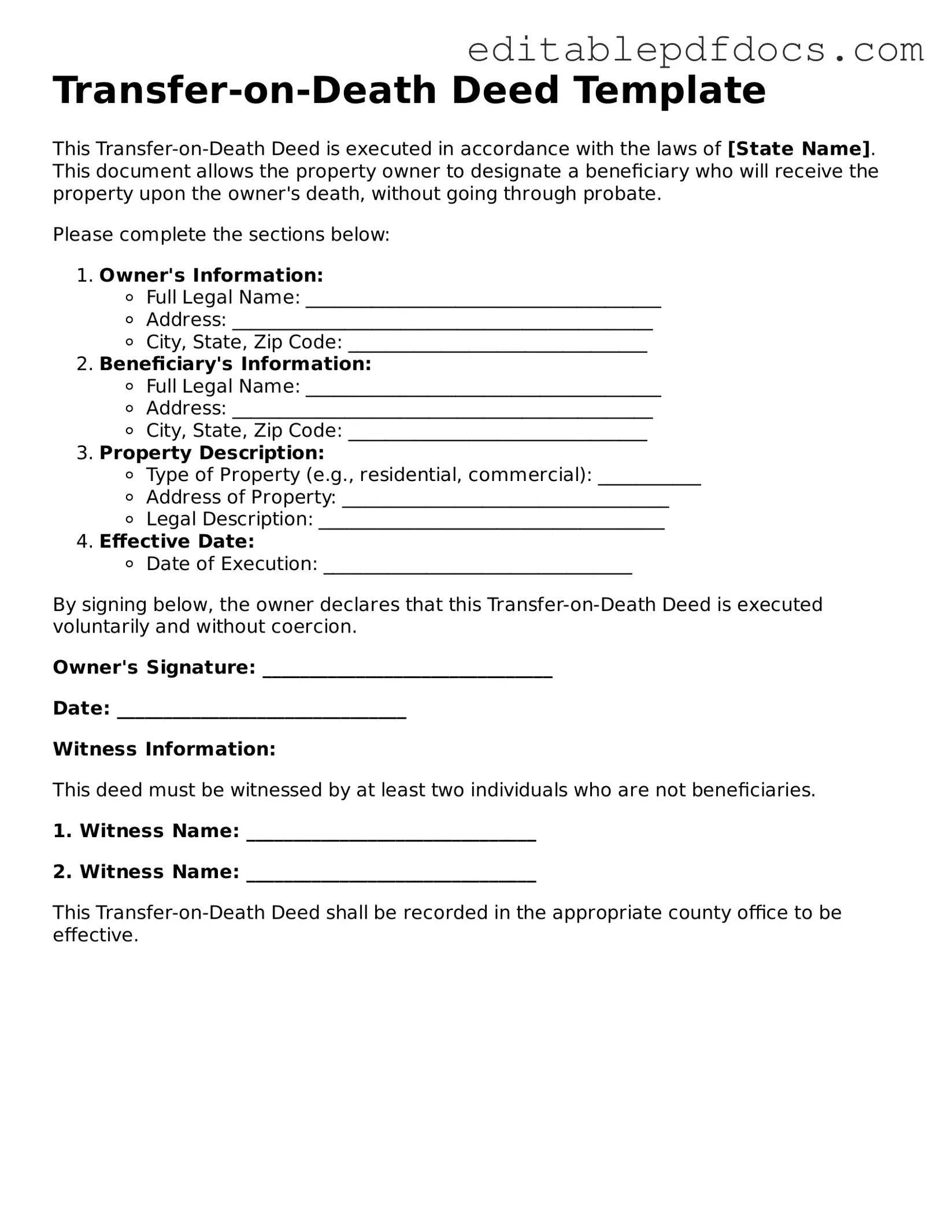Filling out a Transfer-on-Death (TOD) Deed form can be a straightforward process, but many people make mistakes that can complicate the transfer of property. One common error is not properly identifying the property. It’s crucial to provide a complete and accurate legal description of the property, including the address and any relevant parcel numbers. Omitting this information can lead to confusion and potential disputes later on.
Another frequent mistake is failing to include all necessary parties. The form must be signed by the property owner(s), and if there are multiple owners, all must consent to the transfer. Neglecting to have all owners sign can invalidate the deed, which could lead to complications in the future.
Many people also overlook the importance of witnessing and notarization. Some states require the TOD deed to be notarized or witnessed to be legally binding. Skipping this step may render the document ineffective, leaving your intentions unfulfilled.
Additionally, individuals often forget to record the deed with the appropriate county office. Even if the form is filled out correctly, if it is not recorded, the transfer may not take effect. Recording ensures that the deed is part of the public record, which is essential for legal recognition.
Another mistake is not considering the implications of the transfer on taxes. Some individuals do not understand how a TOD deed affects estate taxes or property taxes. Consulting with a tax professional can help clarify any potential tax obligations that may arise from the transfer.
People sometimes fail to update their TOD deed after significant life changes, such as marriage, divorce, or the birth of a child. If the deed does not reflect current relationships or intentions, it can lead to unintended consequences regarding who inherits the property.
Moreover, some individuals do not communicate their plans with family members. This lack of communication can create confusion and conflict among heirs, especially if they are unaware of the existence of the TOD deed or its implications.
Another common oversight is using outdated forms or templates. Laws regarding TOD deeds can change, and using an old version of the form may not comply with current legal requirements. Always ensure you are using the most recent version of the form.
People often underestimate the importance of clarity in naming beneficiaries. If the beneficiary’s name is misspelled or unclear, it can lead to complications during the transfer process. Being precise in this regard is essential to ensure that the right person receives the property.
Lastly, some individuals neglect to seek professional advice. While filling out a TOD deed may seem simple, seeking guidance from a legal expert can help avoid pitfalls and ensure that the document is executed correctly. Taking this step can save time, money, and stress down the line.
